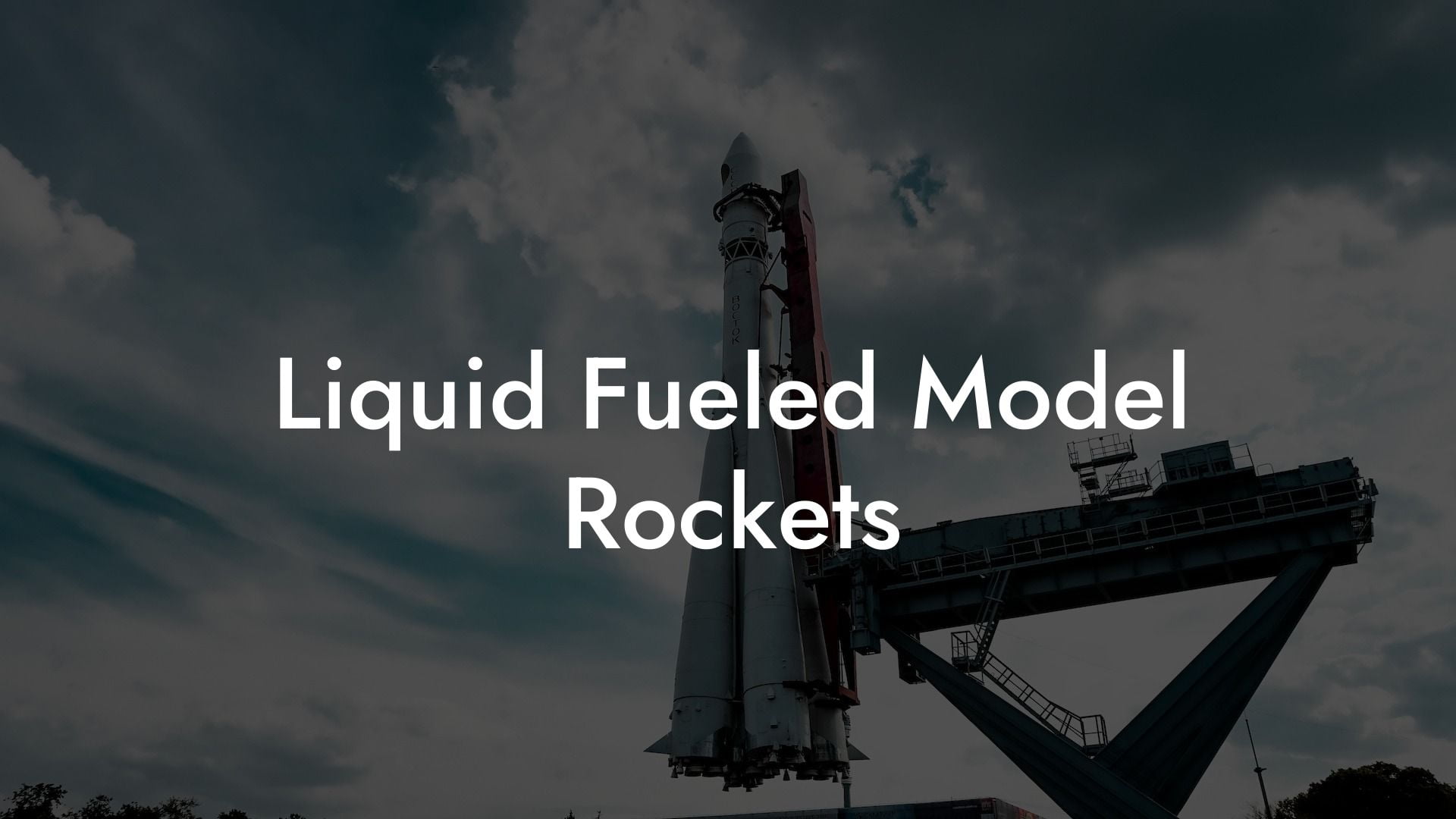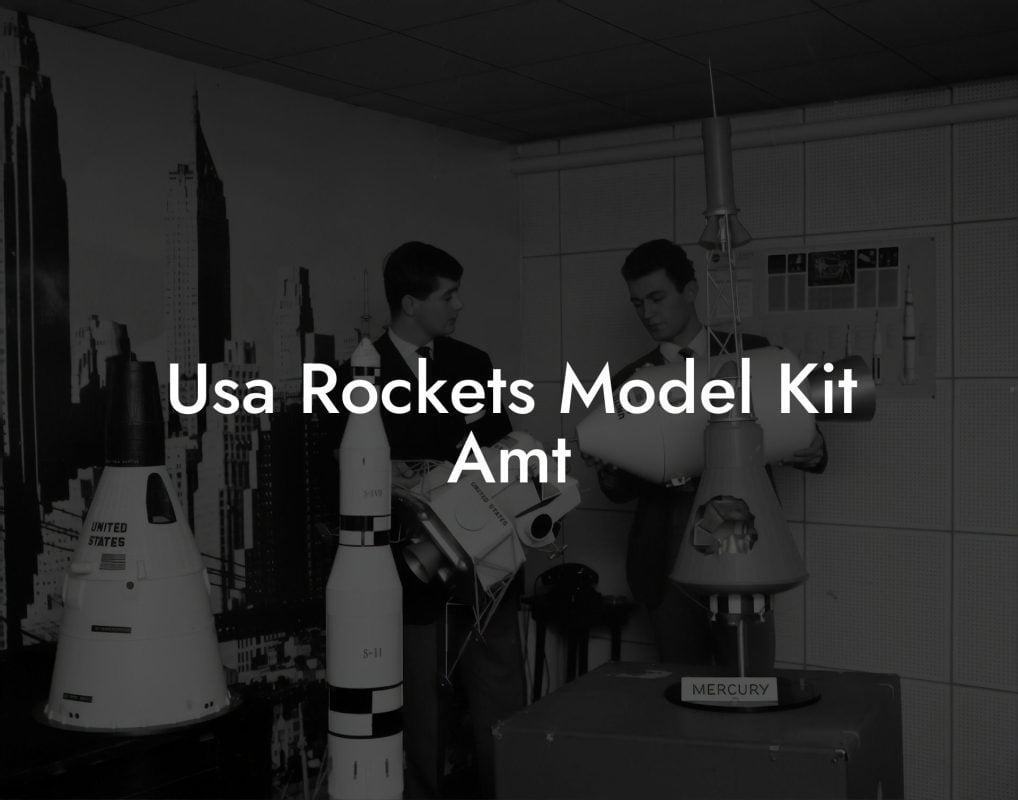Imagine the rush of launching your very own liquid-fueled model rocket into the sky, feeling the thrill of watching it soar to incredible heights, and experiencing the satisfaction of successfully recovering it back to Earth. Welcome to the world of liquid-fueled model rockets, where innovation, experimentation, and excitement come together in a hobby that's out of this world!
Quick Links to Useful Sections
- What Are Liquid Fueled Model Rockets?
- The Benefits of Liquid Fueled Model Rockets
- Getting Started with Liquid Fueled Model Rockets
- Step 1: Learn the Basics
- Step 2: Choose Your Fuel and Oxidizer
- Step 3: Design and Build Your Rocket
- Step 4: Test and Refine
- Safety Considerations for Liquid Fueled Model Rockets
- Resources and community Support: Your Next Steps
- Frequently Asked Questions: Liquid Fueled Model Rockets
What Are Liquid Fueled Model Rockets?
Liquid-fueled model rockets are a type of model rocket that uses liquid propellants, such as liquid oxygen and kerosene or liquid methane, to generate thrust. Unlike solid-fueled model rockets, which use a solid fuel and oxidizer, liquid-fueled rockets offer greater control over the thrust and duration of the flight. This makes them ideal for more complex and ambitious projects, such as high-altitude flights, precision landings, and even orbital launches.
Liquid-fueled model rockets require a higher level of expertise and specialized knowledge, but the rewards are well worth the challenge. With the right skills and equipment, you can push the boundaries of what's possible with model rocketry and create truly remarkable flights.
The Benefits of Liquid Fueled Model Rockets
So, why choose liquid-fueled model rockets over their solid-fueled counterparts? Here are just a few of the benefits:
- Greater Control: With a liquid-fueled rocket, you have more control over the thrust and duration of the flight, allowing for more precise and predictable performance.
- Higher Altitudes: Liquid-fueled rockets can reach much higher altitudes than solid-fueled rockets, making them ideal for high-altitude flights and space exploration.
- Increased Efficiency: Liquid-fueled rockets are generally more efficient than solid-fueled rockets, allowing for longer flights and more payload capacity.
- customization: With a liquid-fueled rocket, you can customize the fuel and oxidizer to optimize performance for specific missions or applications.
Whether you're a seasoned model rocketeer or just starting out, liquid-fueled model rockets offer a new level of excitement and challenge that's hard to resist.
Looking For The Best Model Rocket Kits? You'll Love These:
Getting Started with Liquid Fueled Model Rockets
So, you're interested in getting started with liquid-fueled model rockets? Here are some steps to help you get started:
Step 1: Learn the Basics
Before you start building your first liquid-fueled model rocket, it's essential to learn the basics of rocketry, including the principles of propulsion, aerodynamics, and safety protocols.
Step 2: Choose Your Fuel and Oxidizer
Liquid-fueled rockets require a fuel and oxidizer to generate thrust. Popular choices include liquid oxygen and kerosene, liquid methane and oxygen, and even hybrid fuels like nitrous oxide and sorbitol.
Step 3: Design and Build Your Rocket
With your fuel and oxidizer chosen, it's time to design and build your rocket. This will involve selecting materials, designing the rocket's structure and components, and assembling the entire system.
Step 4: Test and Refine
Once your rocket is built, it's time to test it out. This will involve conducting a series of tests to refine the rocket's performance, optimize the fuel and oxidizer mixture, and ensure safety protocols are in place.
Safety Considerations for Liquid Fueled Model Rockets
Liquid-fueled model rockets can be hazardous if not handled properly. Here are some essential safety considerations to keep in mind:
- Handling Fuels and Oxidizers: Always handle fuels and oxidizers with care, wearing protective gear and following proper safety protocols.
- launch Site Selection: Choose a safe and remote launch site, away from people and flammable materials.
- Launch and Recovery: Always follow proper launch and recovery procedures, including using a launch pad and recovery system.
- Emergency Procedures: Have a plan in place for emergencies, including fires, explosions, and other accidents.
By following these safety considerations, you can minimize the risks associated with liquid-fueled model rockets and enjoy a safe and exciting hobby.
Resources and community Support: Your Next Steps
Getting started with liquid-fueled model rockets can be a challenge, but you don't have to go it alone. Here are some resources and community support options to help you on your journey:
- Online Forums and Communities: Join online forums and communities dedicated to model rocketry, such as Reddit's r/modelrockets and r/liquidfuelrockets.
- Local Model Rocketry Clubs: Look for local model rocketry clubs and organizations in your area, which can provide valuable guidance and support.
- Tutorials and Guides: Take advantage of online tutorials and guides, such as those offered by the National Association of Rocketry and the Tripoli Rocketry Association.
- Workshops and Classes: Attend workshops and classes on model rocketry and liquid-fueled rockets, which can provide hands-on training and expertise.
With the right resources and community support, you can overcome any obstacle and achieve success with liquid-fueled model rockets.
Frequently Asked Questions: Liquid Fueled Model Rockets
Here are some frequently asked questions about liquid-fueled model rockets:
1. What is the difference between liquid-fueled and solid-fueled model rockets?
Liquid-fueled model rockets use liquid propellants, while solid-fueled rockets use a solid fuel and oxidizer.
2. Are liquid-fueled model rockets more dangerous than solid-fueled rockets?
Liquid-fueled model rockets can be hazardous if not handled properly, but with proper safety protocols and precautions, they can be just as safe as solid-fueled rockets.
3. Can I build a liquid-fueled model rocket at home?
Yes, but it's essential to follow proper safety protocols and guidelines, and to seek guidance from experienced model rocketeers.
4. How high can liquid-fueled model rockets fly?
Liquid-fueled model rockets can reach much higher altitudes than solid-fueled rockets, with some models reaching heights of over 100,000 feet.
5. Are liquid-fueled model rockets more expensive than solid-fueled rockets?
Yes, liquid-fueled model rockets can be more expensive than solid-fueled rockets, due to the complexity of the fuel and oxidizer systems.
Looking For The Best Model Rocket Kits? You'll Love These:
Useful Interruption: Dive deeper into the world of Model Rockets with our most popular sections. If there is anything you think is missing or anything you would love for us to write about, just give us a shout.
- Getting Started & Basics With Model Rockets
- Model Rocket Design, Build & Customization
- Model Rocket Propulsion & Engine Technology
- Model Rocket Launch Techniques & Recovery
- Model Rocket Advanced Rocketry & Innovations
- Model Rocket DIY and Customization
- Model Rocket Equipment Reviews & Digital Tools
- Community, Competitions & Education
- Model Rocket Troubleshooting & FAQs
- Model Rocket Bonus/Seasonal & Niche Topics
A group of model rocket enthusiasts gathered at a field for their weekly launch event. Among them was Dave, a seasoned builder known for pushing the limits of hobby rocketry. This time, he had outdone himself.
“Ladies and gentlemen,” Dave announced, dramatically pulling a cloth off his latest creation, “I present to you: The Kraken!”
The crowd gasped. This wasn’t just a model rocket, it was a monster. The thing stood 8 feet tall, had six clustered engines, and was covered in enough duct tape to qualify as a classified aerospace project.
“Dave,” muttered Steve, the cautious safety officer, “Have you, uh… done the math on this?”
“Math?” Dave scoffed. “I built it in my garage at 3 a.m. with parts from eBay. This is an art piece, Steve.”
The countdown began.
5…
4…
3…
2…
1…
The engines ignited with a BOOM, and The Kraken shot up… kind of. It immediately did a violent barrel roll, narrowly missing the spectators before skyrocketing at an angle that could only be described as “legally questionable.”
The crowd collectively ducked as The Kraken flew straight over the adjacent cornfield, where Old Man Jenkins, the grumpiest farmer in town, was minding his business.
KABOOM!
The rocket disappeared behind the barn. A moment later, a flaming piece of Estes igniter wire landed at Steve’s feet. The silence was deafening.
And then, an unmistakable sound echoed across the field.
Jenkins’ shotgun being cocked.
“DAVE!!!” Steve shouted. “RUN.”
And that was the day Dave invented the first-ever biologically powered rocket booster: pure adrenaline.
To this day, nobody knows where The Kraken landed, but legend has it, it still haunts the skies, terrifying unsuspecting drones and low-flying birds.















